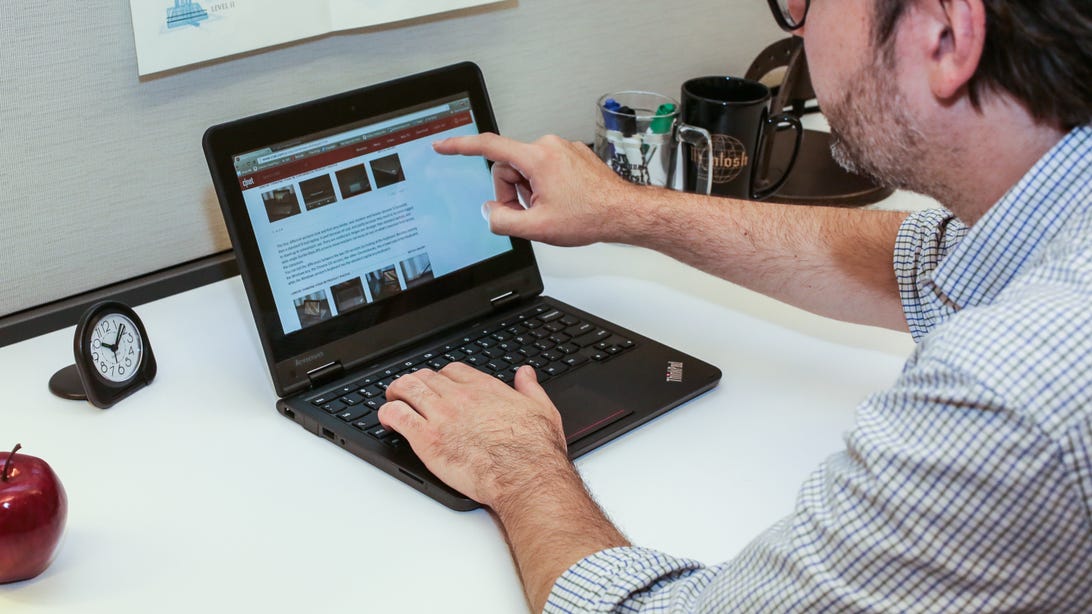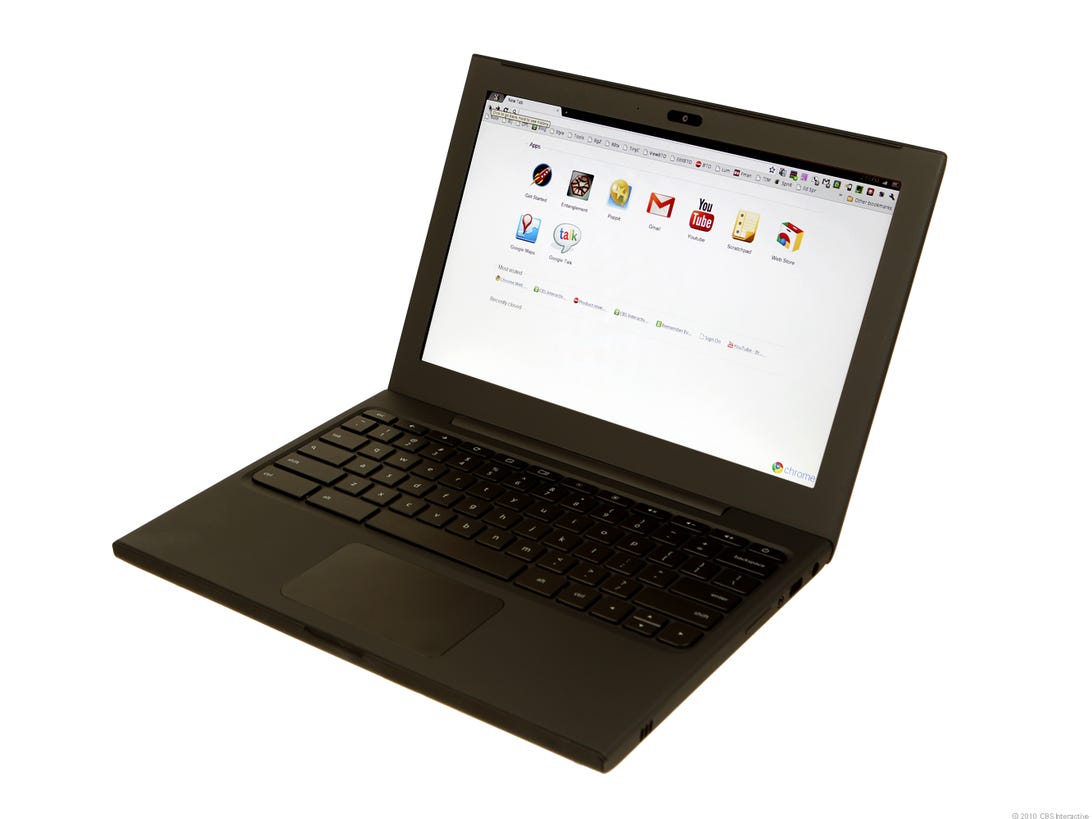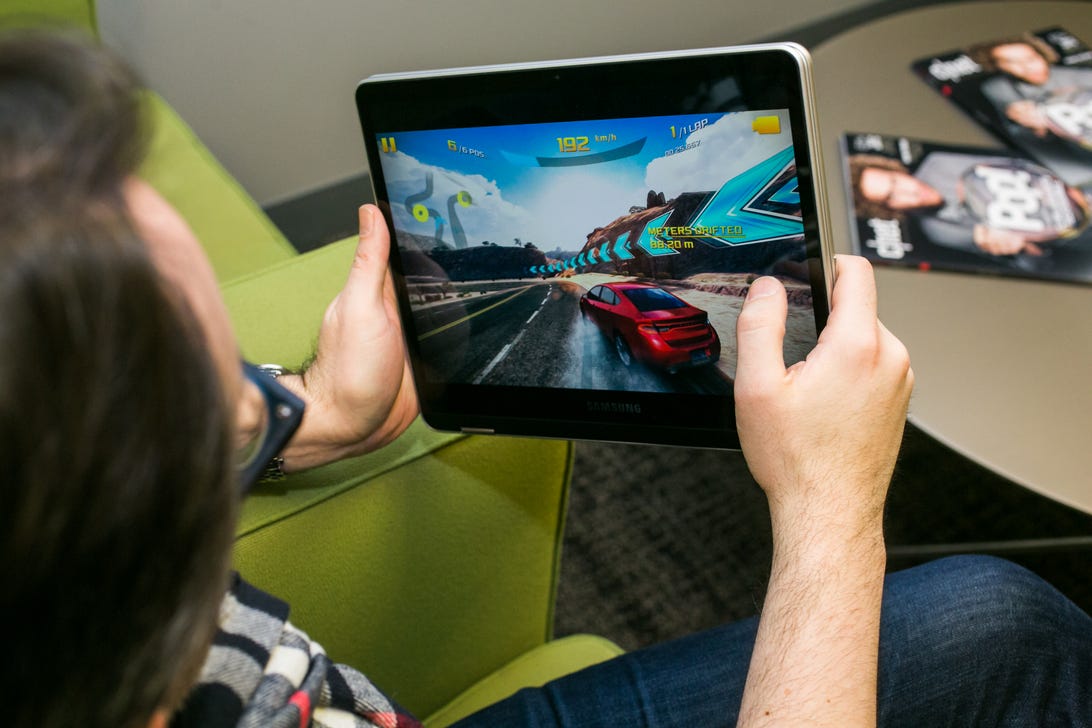No one expected a lot from the first Chromebooks, announced 10 years ago on May 11, 2011. After all, they came on the heels of the Netbook era, when low-cost, low-power laptops were first seen as a panacea for overpriced tech, but ended up overselling their limited functionality. And after spending a few years struggling to get Windows-running, Intel-Atom-powered Netbooks to do much of anything useful, I was not optimistic about a personal computer platform that seemed even more constrained out of the box.
ChromeOS, announced earlier in 2011, didn't sound like much of an operating system at all to me at the time. It was essentially just the same Chrome web browser already in wide use, with a keyboard and screen wrapped around it. The platform's biggest glaring omission was the ability to install and run software. Who would ever want what was essentially a browser in a box?
A decade later, Google's affordable laptop concept is still kicking -- and thriving. During the COVID-19 crisis, Chromebooks helped students and workers stay connected while stuck at home. It seems like the Chromebook was ahead of its time, and it took a pandemic for its full potential to be realized.
A new budget challenger
The first Chromebook models were announced exactly 10 years ago, May 11, 2011, at the Google I/O conference in San Francisco. They included models from Samsung and Acer, still two of the bigger names in Chromebooks. At the time, CNET reporter Maggie Reardon wrote:
Samsung and Acer will each be offering Chromebook laptops starting June 15. The Samsung Chromebook will cost $429 for the Wi-Fi only version and $499 for the 3G version. Acer's Wi-Fi only Chromebook will cost $349.
Amazingly, $350-$450 is still pretty common for an entry-level Chromebook a decade later, making these one of the few tech products that have not measurably increased in price over the past 10 years.
As a long-time proponent of budget-priced laptops and desktops, I often say people buy too much computer for their needs, especially if those needs heavily skew toward basic web browsing, online shopping, social media, email and video viewing. Living life completely in the web browser makes sense today, but it was a tough sell back in 2011 when there were fewer cloud-based software tools. And I wasn't the only one who thought so. From that initial 2011 dispatch:
Michael Gartenberg, an analyst with Gartner, said the fact that the browser is limited to Chrome might be a factor, considering that competing products offer more capability and flexibility at roughly comparable pricing. "It's pretty interesting," he said. "But at these prices, will consumers buy it? At $499, that gets you a pretty capable Netbook or even an iPad."
My colleague Scott Stein said as much that same week.
For $499, the Samsung Series 5 Chromebook has its work cut out for it -- namely, because tablets and "high-end" 11- and 12-inch laptops and Netbooks (some with faster processors) have already occupied the same landscape. It's a question we've been pondering for a while now, writ again: What truly constitutes the perfect small-screen portable?

An early Chromebook from Lenovo.
Sarah Tew/CNETA decade later, iPads and Chromebooks are still battling for your casual computing attention. Both can still be found for under $400, and premium versions of both top $1,000. The biggest shift is that Chromebooks have become a bit more iPad-like, adding access to the Google Play app store, while iPads have become more laptop-like, adding mouse and touchpad support.
The first taste of ChromeOS
It wasn't until I started going down the decade-long rabbit hole of Chromebook history that I remembered the one Chromebook that predated this May 11, 2011 launch. It was Google's own Cr-48 Chromebook, a prototype machine offered in 2010 to select pilot program invitees. These plain-looking black boxes had a 12.1-inch, 1,280x800-pixel display, 3G mobile broadband and an Intel Atom N455 CPU.
The most interesting footnote is a surprisingly forthright admission from Google to prospective Cr-48 testers: "The Pilot program is not for the faint of heart. Things might not always work just right." Ironically, Chromebooks have become successful by exhibiting the opposite behavior. They're the perfect laptop for the faint of heart and things usually work right.
This vintage gallery shows you just how generic the Cr-48 looked and yes, it had a VGA port.

Google's original Cr-48 Chromebook prototype.
Josh Miller/CNETBut what did we think of the first consumer Chromebooks? The first Samsung Chromebook won praise from my colleague Josh Goldman for being streamlined, compared to Windows laptops of the time.
Since everything is Web-based there is a refreshing lack of bloatware. Clicking the Home button in the browser brings you right to your collection of Chrome Web apps, which are just bookmarks to sites. The experience is actually enjoyable, especially if you already have a Google account set up ... After a little use, though, the Chromebook's shine starts to wear off. For us it started when we needed to open a ZIP file and were greeted with an unsupported file format error.
We also reviewed an early Acer model called the C7, which dropped its price to an impressive $199. But our 2012 review said it didn't compare favorably to budget tablets and low-end Windows laptops: "The Acer C7's advantages are a physical keyboard and touchpad, that larger hard drive, and the price. The disadvantages? Seriously short battery life and Chrome's very odd, streamlined operating system."
Read more: Laptop vs. Chromebook: What's the difference and which works better for you
Turning the corner
Things continued like this for some time. Chromebooks ate a large amount of the budget laptop mindshare as more and more companies got into the act, but these machines continued to feel like secondary or backup laptops at best. Looking back at the historical record, my first "living with a Chromebook" article was in 2013 and it's safe to say that I was still a skeptic.
We found Chrome OS to be promising, but ultimately not up to the level of a full-time OS. In other words, it was generally fine for a second computer, but not quite ready to run as your one and only go-to PC for every task.
It really wasn't until 2017 that I found a Chromebook that worked as well as a Windows or MacOS laptop and didn't give you too much operating system FOMO. This was the Samsung Chomebook Pro, which at $550 was miles better than any Windows laptop at the same price.
There are plenty of Windows laptops and tablets in that price range (or lower), but none that offer this combination of a decent design, mostly metal construction, lag-free performance, long battery life, better-than-HD touchscreen, built-in stylus and a hybrid hinge that transforms the system into a tablet.
It even had a forward-looking 3:2 aspect ratio display. But the big move that helped Chromebooks go from niche product to mainstream was the then-new ability to access the Google Play app store. Being able to run nearly any Android app on a Chromebook took away the biggest objection ChromeOS skeptics had -- the inability to download and run local apps. Yes, they were the mobile versions, but it was enough for a lot of tasks.

The Samsung Chromebook Pro from 2017.
Sarah Tew/CNETToday, it's a Chromebook world
The world changed in March 2020, as school and offices closed because of COVID-19 and so many things moved online. Many families, between remote school and remote work, found they needed one laptop per person and inexpensive Chromebooks found a new audience. These were relatively affordable PCs that were able to access the online tools that schools and offices were using, including Zoom and Google Classroom.
Read more: Are Chromebooks worth it? Here's why I recommend them
Through 2020 and 2021, the Chromebook was highlighted as one of the best tools for students and remote workers, and laptop reviewer Josh Goldman now says a Chromebook is his default recommendation for most people right now. Why is that? I think it's because the pandemic-related changes have forced a lot of us to reevaluate what it is we really need our computers to do. As Goldman puts it, "After just a little digging, many people realize they simply don't need to do any more than what can be done on a Chromebook."
Technology - Latest - Google News
May 11, 2021 at 11:00PM
https://ift.tt/2Sy0wKv
The Chromebook at 10: How these stripped-down computers went mainstream - CNET
Technology - Latest - Google News
https://ift.tt/2AaD5dD
Shoes Man Tutorial
Pos News Update
Meme Update
Korean Entertainment News
Japan News Update
Bagikan Berita Ini















0 Response to "The Chromebook at 10: How these stripped-down computers went mainstream - CNET"
Post a Comment